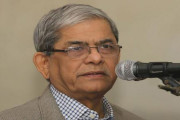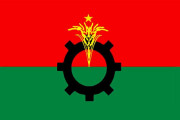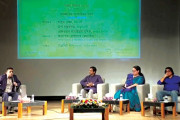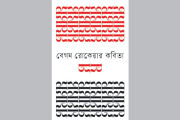The significance of Bhabanipur cannot be undermined given that a big chunk of the voters are non- Bengalis, comprising Hindus, Sikhs and Muslims and that too Hindi speaking. Therefore, Banerjee referring to it as a “mini-India” fits in.
।। Kumkum Chadha ।।
Even though Bhabanipur was in focus, West Bengal Chief Minister Mamata Banerjee having a smooth sail in that by-election was a given. Bhabanipur is part of the Lok Sabha constituency that elected Banerjee five times over. After losing Nandigram in May, it was necessary for Banerjee to get elected within six months to be able to continue as Chief Minister.
In the recently concluded Assembly elections, Bhabanipur was wrested by Trinamool Congress’ Sobhandeb Chattopadhyay but he stepped down to make way for Banerjee.
Banerjee won the Bhabanipur seat with an impressive margin. Her bete noire Bharatiya Janata Party had put up lawyer turned politician, Priyanka Tibrewal to face her. That Tibrewal was no match was a given.
However what drew attention was the slogan “B for Bhabanipore, B for Bharat”: seen as one impregnated with major political connotations that extend beyond her home state that she now rules.
With the state now well under her, a smug and ambitious Banerjee is looking towards Delhi hence the Bharat nomenclature. In other words, Bhabanipur is the first step to the wider goal of politically conquering India in 2024 when the general elections are due in the country.
Rather, it was an outreach to an electorate that needed to be wooed and one that is crucial to Banerjee’s acceptance as a leader outside her home state of West Bengal.
The significance of Bhabanipur cannot be undermined given that a big chunk of the voters are non- Bengalis, comprising Hindus, Sikhs and Muslims and that too Hindi speaking. Therefore, Banerjee referring to it as a “mini-India” fits in. Also she went that extra mile to connect with the non-Bangla speaking electorate, what with visiting gurudwaras, mosques and even churches.
Underlying all this is a political message: the need to be accepted as a leader by non-Bangla: a clear message that TMC is preparing to get a national footprint.
Till this election, Bhabanipur’s acceptance of Banerjee was partial, given that in 2016, the TMC had lost in two wards of the eight in Bhabanipur. But this time around things were different and the party managed to wrest all the eight wards in the constituency: “This is the first time we did not trail in any of the eight wards” a smug Banerjee said, even as she expressed gratitude to the electorate for reposing faith in the Trinamool Congress.
That Bhabanipur win goes beyond Bengal is a given. It should, therefore, not be seen from the prism of merely securing Banerjee’s office as Chief Minister. That is only a small part of the story. The main plot is to see it as a step-up to realize the Delhi-dream as it were. Add to this Banerjee’s own assertion that the “nation was watching this election alongside Bengal” and the political significance is clear.
Banerjee was not off the mark. Since her spectacular victory in the Assembly elections, she has taken a leap: from being a state leader she has emerged as one who is now ready to don the national mantle.
Simply put this means that Banerjee has come of age and seems to be the only one who has the capacity, nerve and grit to politically challenge Prime Minister Narendra Modi.
Even though this should be a god sent opportunity for a fragmented Opposition, they don’t seem over enthused at the prospect of the diminutive lady turned giant slayer taking the lead.
Irrespective Banerjee is raring to go: hell bent on responding to what she terms as the “Call of Delhi”. This, she states, is TMC’s “new challenge”.
In an article in TMC’s very own Jago Bangla, Banerjee writes that the people are dreaming of a new India around the TMC.
Claiming that the party is receiving calls from other states, Banerjee said that these have to be responded to and people’s wishes fulfilled. In the same strain she points to the Congress’s failure to take on the BJP on the national stage.
Banerjee’s message is loud and clear: the Opposition should shift focus from the Congress and look elsewhere.
Having proven itself electorally and its ranks swelling by the minute, there is little room for doubt that if any Party “can do it” as it were, it is the TMC; if any leader has the mettle, it is none other than Banerjee.
Add to this the big numbers joining the TMC including consequential leaders like Sushmita Dev and Luizinho Falerio from the Congress and Babul Supriyo from the BJP. Others like Mukul Roy, Biswajit Das and Sabyasachi Dutta, who were initially with the TMC, had jumped ship, have now returned “home”.
The TMC theme song is to flag Mamata as a saviour, and in the process project Banerjee as the face of the Opposition in a run up to the 2014 elections.
Post its spectacular victory in the Assembly polls, TMC’s days of being a regional party are kind of over. The party is now all set to create a national footprint for itself.
The script: look beyond Bengal, work towards a debut in other states, and use the Didi trademark to showcase her as a viable and desirable alternative to Modi and the BJP which is divisive and destructive.
However, much depends on Banerjee and how she plays her cards or plans her next move. She should seize the moment under no circumstances fritter away the well-earned advantage of people outside Bengal seeing her as a possible alternative to the current dispensation.
The writer is a senior Indian journalist, political commentator and columnist of The Independent. She can be reached at: (kumkum91@gmail.com)










































































































































































